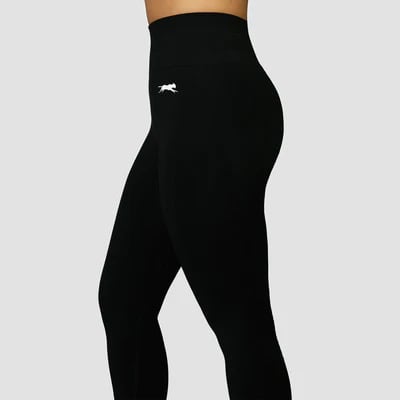The evolution of women’s activewear is a fascinating journey that mirrors changes in societal norms, technological advancements, and shifting perceptions of fitness and style. From its inception as purely functional attire to today’s seamless blend of performance and fashion, activewear has come a long way. This article explores the milestones of this transformation and highlights how contemporary designs, like Aura leggings and Aura shorts, continue to shape the industry.
A Historical Glimpse: Where It All Began
In the early 20th century, activewear for women was heavily influenced by societal expectations. Clothing designed for physical activity was modest and restrictive, with long skirts, corsets, and heavy fabrics dominating the scene. Women who engaged in sports often did so while wearing attire ill-suited for comfort or performance.
The 1920s brought the first major shift with the rise of women’s participation in sports. Designers began experimenting with lighter fabrics and more practical cuts, reflecting the changing role of women in society. For instance, tennis players like Suzanne Lenglen popularized shorter skirts and sleeveless tops, which were revolutionary at the time.
Post-War Period: The Functional Focus
The post-war era of the 1940s and 1950s saw the emergence of functional activewear. As fitness and outdoor activities became more popular, there was a growing need for attire that supported movement. Synthetic fabrics like nylon gained traction, offering durability and ease of maintenance.
However, activewear during this period was still largely utilitarian, prioritizing practicality over style. The concept of activewear as a fashion statement was yet to emerge.
The Fitness Boom of the 1980s
The 1980s marked a pivotal era in the evolution of women’s activewear. The fitness craze swept across the globe, fueled by aerobics videos, celebrity endorsements, and a growing awareness of health and wellness.
With this newfound enthusiasm for exercise, activewear underwent a dramatic transformation. Bright colors, bold patterns, and form-fitting designs became the norm. Leggings, in particular, became a staple, paving the way for modern interpretations like Aura leggings, which combine vibrant aesthetics with unparalleled comfort.
The 1980s also introduced spandex as a game-changing fabric, offering stretch and support. Activewear began to transition from gym-only attire to casual, everyday wear, laying the groundwork for the athleisure trend we see today.
2000s and Beyond: The Rise of Athleisure
The 21st century has been a golden age for activewear, with the rise of athleisure redefining how people view fitness fashion. Athleisure refers to clothing that combines the functionality of activewear with the aesthetics of everyday fashion. This trend has blurred the lines between gym wear and streetwear, making it acceptable—and even stylish—to wear leggings and sports bras outside of workout settings.
Modern activewear designs are characterized by sleek lines, advanced fabrics, and versatile functionality. Items like Aura shorts exemplify this trend, offering breathable materials and stylish cuts that transition seamlessly from a morning run to brunch with friends.
Technology and Sustainability in Activewear
One of the defining features of contemporary activewear is the integration of technology and sustainability. Performance fabrics now include moisture-wicking properties, odor resistance, and UV protection, enhancing both comfort and functionality.
Brands have also embraced sustainability, creating eco-friendly options to meet the demands of environmentally conscious consumers. Recycled materials, biodegradable packaging, and ethical production practices are becoming the industry standard.
Cheetas, for instance, incorporates these advancements in its designs, ensuring that products like Aura leggings and Aura shorts not only enhance performance but also contribute to a sustainable future.
Body Positivity and Inclusivity
Another significant development in the evolution of women’s activewear is the emphasis on body positivity and inclusivity. Gone are the days when activewear catered only to specific body types. Today, brands celebrate diversity by offering a wide range of sizes, ensuring that every woman feels confident and supported during her workouts.
Inclusive activewear campaigns have empowered women to embrace their bodies, no matter their shape or size. This shift aligns with broader societal movements promoting self-love and acceptance.
The Future of Women’s Activewear
As we look to the future, women’s activewear is poised to continue evolving. Smart clothing with built-in sensors to track fitness metrics, customizable designs, and even more sustainable practices are expected to shape the next phase of the industry.
Moreover, the fusion of fashion and function will remain at the forefront. Consumers are increasingly seeking versatile pieces that reflect their personal style while delivering top-notch performance.
Why Cheetas Leads the Way
Cheetas embodies the perfect blend of fashion, functionality, and innovation in women’s activewear. With a commitment to quality and style, Cheetas offers modern women the tools they need to feel confident and comfortable, whether they’re hitting the gym or running errands.
Products like Aura leggings and Aura shorts exemplify the brand’s dedication to creating activewear that fits seamlessly into all aspects of life. Designed with advanced fabrics and a keen eye for detail, these pieces are the ultimate expression of contemporary activewear.
As the journey of women’s activewear continues to unfold, Cheetas remains at the forefront, inspiring women to stay active, stylish, and empowered.

